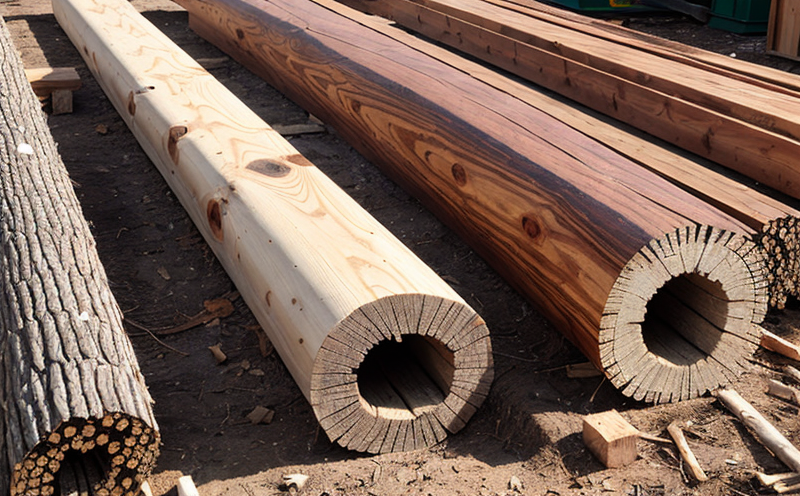Termite Choice & No-Choice Bioassay Testing
The termite choice and no-choice bioassay testing is a critical component in evaluating the durability and effectiveness of wood preservatives, fungicides, and other treatments intended to enhance the longevity of structural timber. This method is widely used across sectors such as architecture, construction, and environmental sustainability to ensure that materials meet stringent standards for performance under real-world conditions.
The termite choice bioassay involves placing treated and untreated wooden specimens in a controlled environment where termites are allowed to interact freely with the wood samples. Conversely, the no-choice test presents only treated specimens without any untreated control, allowing researchers to determine if the treatment is sufficient on its own. These tests help identify which preservatives or treatments provide superior protection against termite damage.
For accurate and reliable results, it's essential that the testing laboratory adheres strictly to international standards such as ISO 16140-2:2020 and ASTM D7388. Compliance with these guidelines ensures consistency across different laboratories worldwide, facilitating better communication among stakeholders involved in wood preservation projects.
The choice between using a termite choice or no-choice bioassay depends on specific project requirements and the type of data desired. For instance, if you want to assess how well a particular treatment works when termites have access to alternative food sources, then choosing either option could yield valuable insights into its efficacy.
Preparing specimens for this test requires careful selection and preparation of wood samples that accurately represent typical construction materials used in the target application. Proper conditioning before testing ensures consistent moisture content throughout all samples being evaluated. Additionally, ensuring proper labeling and documentation helps maintain traceability during analysis.
When selecting appropriate preservatives or treatments based on bioassay results, it's crucial to consider not only laboratory findings but also field performance data where available. Real-world exposure conditions may differ significantly from controlled environments used in these tests; therefore, combining both sets of information provides a more comprehensive understanding of product effectiveness.
In summary, termite choice and no-choice bioassay testing plays an indispensable role in developing effective wood preservation strategies that protect valuable timber resources against insect attack. By adhering to established protocols and interpreting results thoughtfully, professionals can make informed decisions about selecting suitable treatments for various applications within the agricultural and forestry sectors.
Applied Standards
| Standard Number | Title of Standard | Description |
|---|---|---|
| ISO 16140-2:2020 | Methods for Testing the Durability of Wood Preservatives Part 2 - Bioassays | This international standard provides detailed procedures for conducting both choice and no-choice bioassays to evaluate wood preservative treatments. |
| ASTM D7388-15 | Standard Practice for Conducting Choice and No-Choice Bioassays on Wood Preservatives | An American Society for Testing Materials standard outlining best practices for performing these types of tests under laboratory conditions. |
Industry Applications
- Structural timber preservation in residential and commercial buildings.
- Pavements, fences, and other outdoor structures requiring termite resistance.
- Log homes and cabins built from untreated logs.
- Landscaping projects involving wooden elements.
Use Cases and Application Examples
The choice and no-choice bioassay testing is particularly useful for evaluating new formulations of wood preservatives or fungicides before they are introduced into the market. Companies developing eco-friendly alternatives to traditional chemical treatments often rely on these tests to demonstrate their products' effectiveness while minimizing environmental impact.
For instance, a company specializing in natural oil-based wood protectants might use termite choice bioassays to show that their product can effectively deter termites over extended periods without compromising the integrity of the treated wood. Similarly, manufacturers of synthetic preservatives may opt for no-choice tests to prove that their products are stable and effective even when not exposed to competing food sources.
In addition to private sector applications, government agencies responsible for public infrastructure also benefit from this type of testing. They can ensure that public works projects involving wood components meet strict durability requirements, thereby reducing maintenance costs associated with premature failures due to insect damage.





